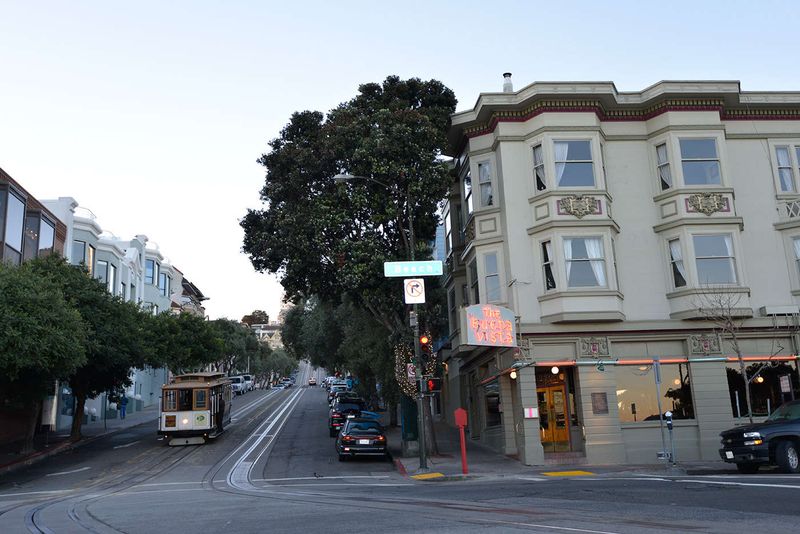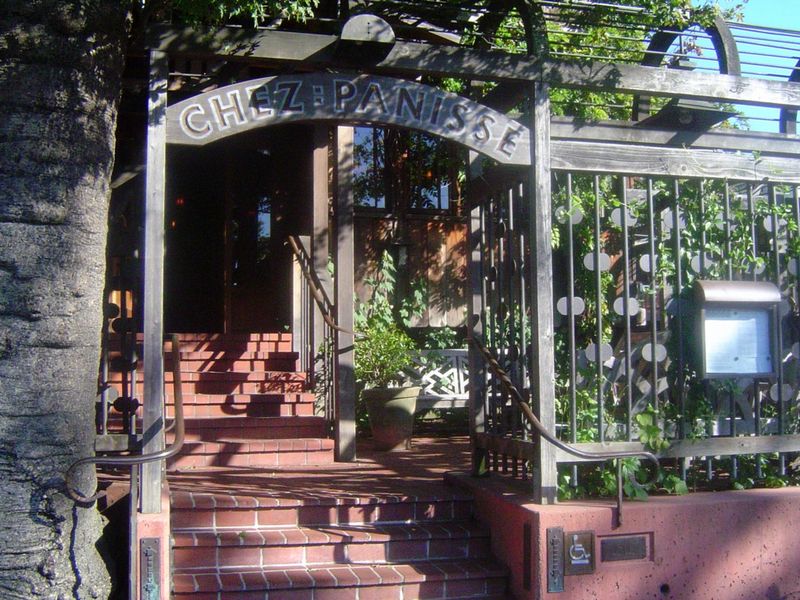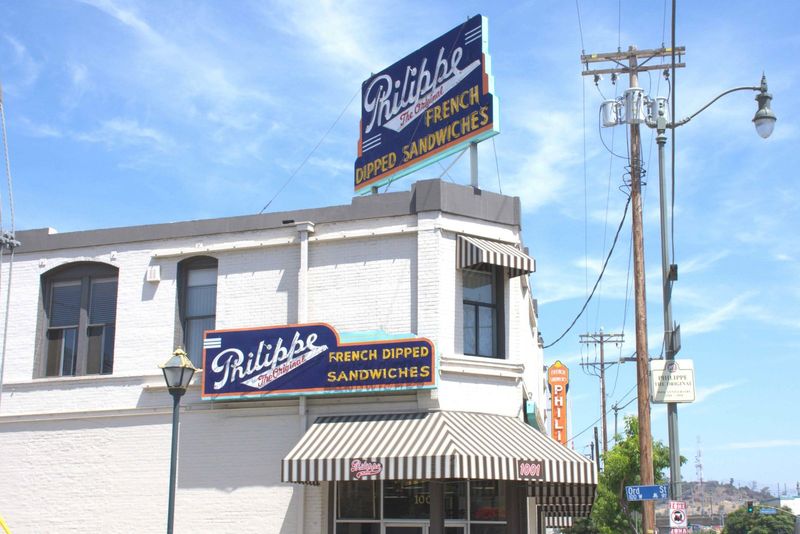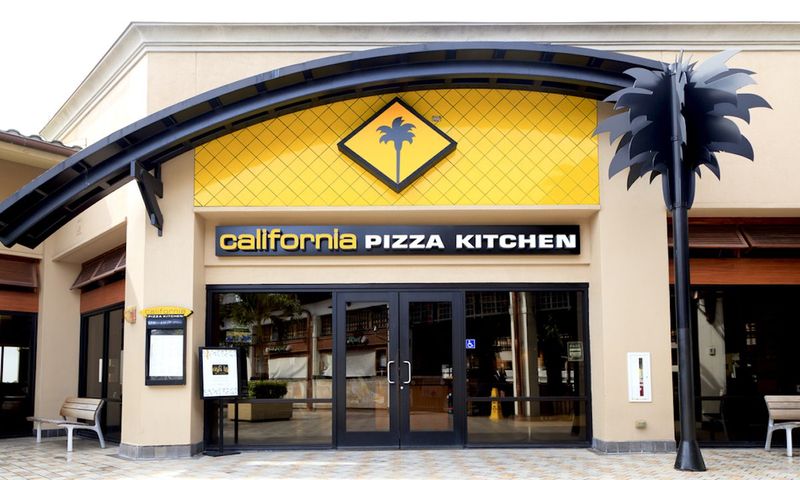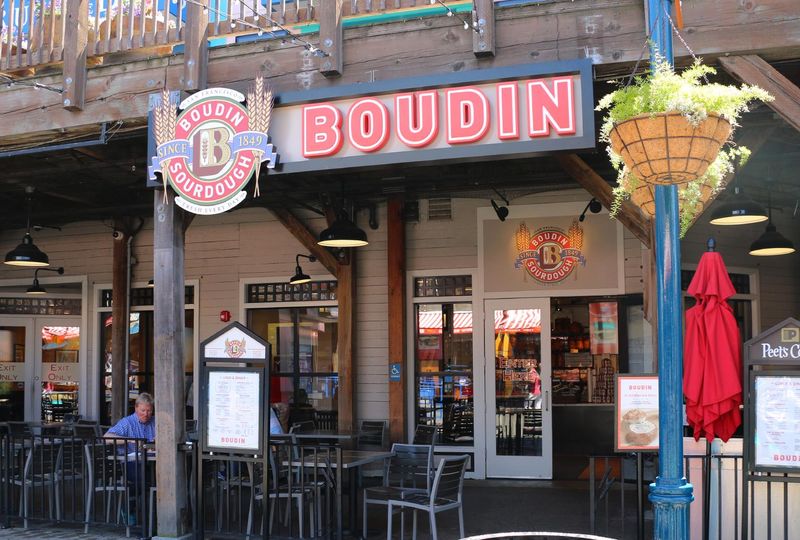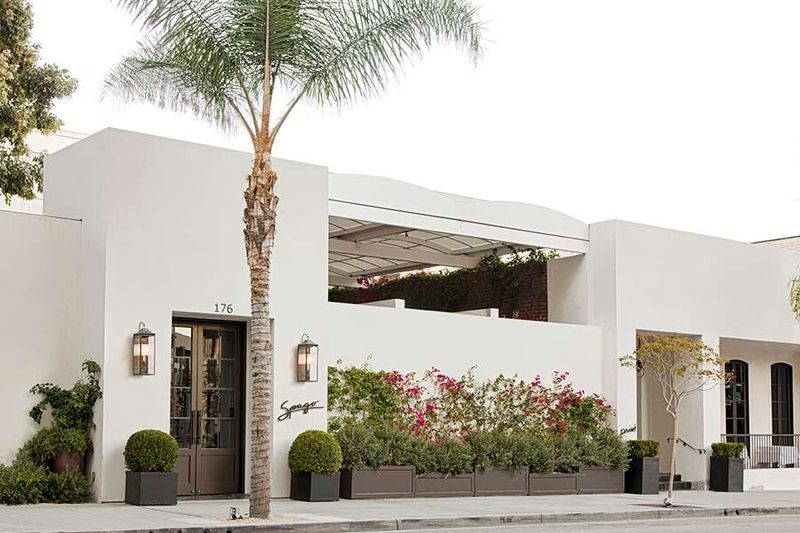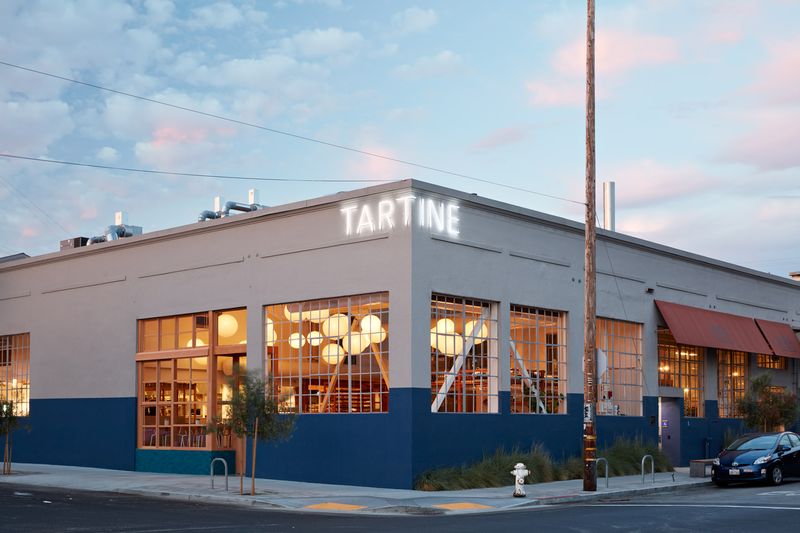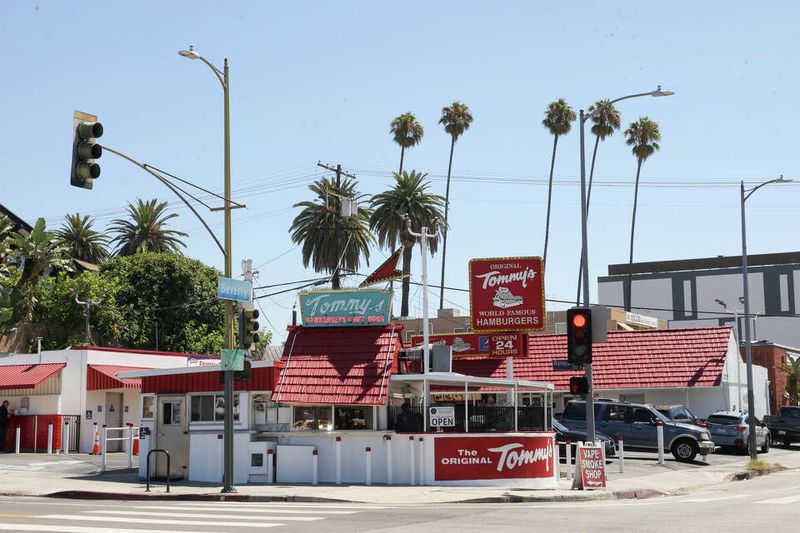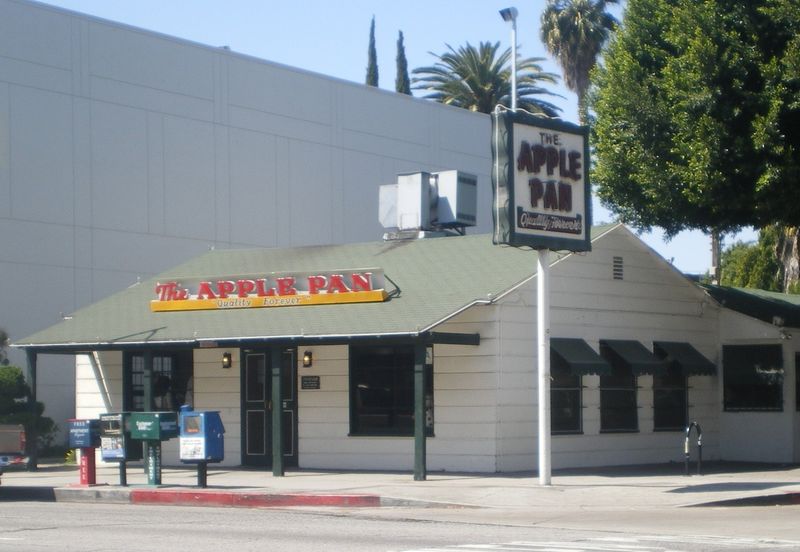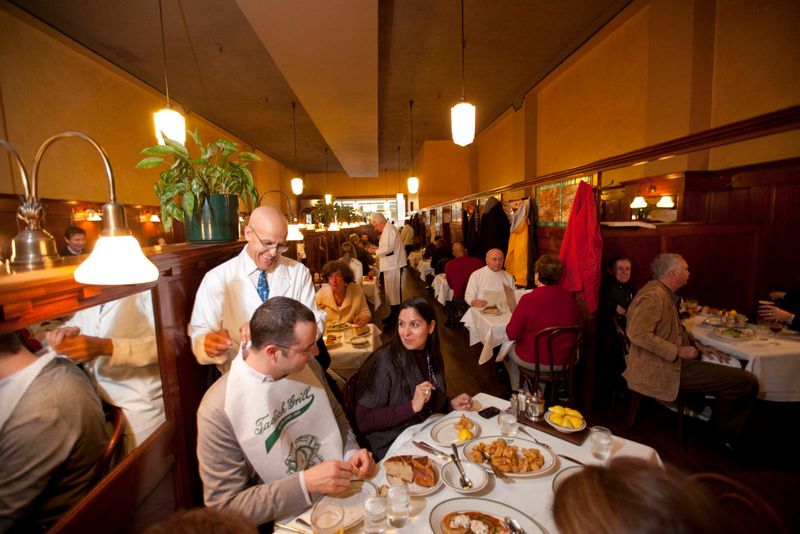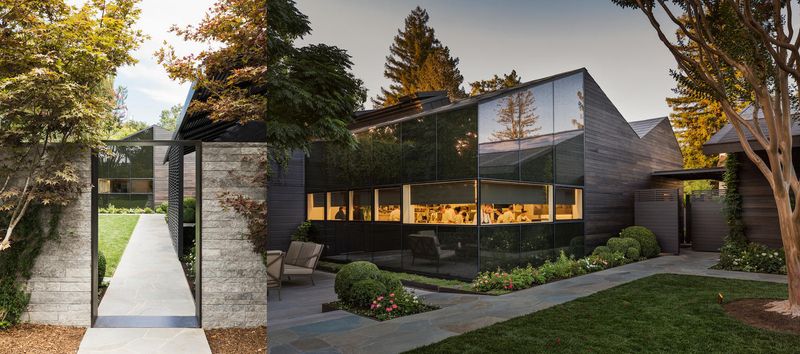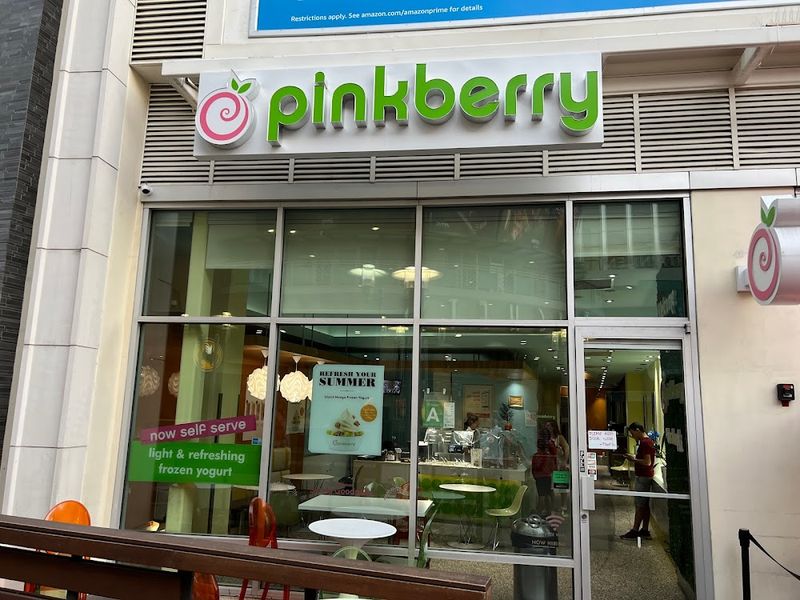California has always been America’s kitchen laboratory, where bold chefs and creative restaurateurs experiment with flavors that eventually sweep across the nation. From San Francisco’s sourdough revolution to Los Angeles’ fusion cuisine explosion, the Golden State continues to shape how we eat. Many of your favorite dishes and dining concepts actually started in small California kitchens before becoming household names nationwide.
1. Buena Vista Cafe
Back in 1952, a San Francisco cafe owner made a simple drink that would warm hearts across America for decades. Buena Vista Cafe introduced Irish coffee to the United States after owner Jack Koeppler tried recreating the magical beverage he’d tasted in Ireland.
Located near Fisherman’s Wharf, this cozy spot still serves over 2,000 Irish coffees daily using their original recipe. The secret lies in perfectly balancing hot coffee, Irish whiskey, sugar, and fresh cream that floats on top like a cloud.
Today, Irish coffee appears on menus from New York to Texas, but none taste quite like the original San Francisco version.
2. Chez Panisse
Alice Waters opened a small Berkeley restaurant in 1971 that would completely change how Americans think about fresh ingredients. Chez Panisse started the farm-to-table movement by serving only locally grown, seasonal produce when most restaurants used frozen and processed foods.
Waters built relationships with nearby farmers, creating a network that supplied the freshest vegetables, fruits, and meats directly to her kitchen. Her simple cooking philosophy emphasized letting natural flavors shine without heavy sauces or complicated preparations.
Now every trendy restaurant claims to be farm-to-table, but Waters pioneered this concept when it seemed revolutionary and risky.
3. Philippe The Original
Philippe Mathieu accidentally created one of America’s favorite sandwiches in 1918 when he dropped a French roll into roasting pan drippings. Instead of throwing it away, he served the juice-soaked bread to a customer who loved it so much he returned daily for the same “dipped” sandwich.
Located in downtown Los Angeles since 1908, Philippe’s still uses the same simple formula: thinly sliced roasted meat piled on French bread, dipped in natural beef juices. Their sawdust floors and communal tables maintain the original working-class atmosphere.
French dip sandwiches now grace menus everywhere, but Philippe’s remains the authentic original with over a century of perfecting their accidental masterpiece.
4. California Pizza Kitchen
Rick Rosenfield and Larry Flax revolutionized pizza in 1985 by putting barbecue chicken on thin crust at their Beverly Hills restaurant. California Pizza Kitchen introduced Americans to gourmet toppings like Thai chicken, smoked salmon, and goat cheese when most pizzerias only offered pepperoni and sausage.
Their innovative approach combined California’s fresh ingredients with international flavors, creating pizzas that felt more like restaurant entrees than casual food. The thin, crispy crusts provided the perfect foundation for bold flavor combinations.
Gourmet pizza chains now exist nationwide, offering everything from truffle oil to arugula toppings, but CPK pioneered the concept that pizza could be sophisticated and creative.
5. Boudin Bakery
Isidore Boudin brought sourdough starter to San Francisco in 1849 during the Gold Rush, creating bread with a distinctive tangy flavor that became the city’s signature food. The same wild yeast culture still lives today, making every Boudin loaf a direct descendant of that original batch.
San Francisco’s unique climate and fog create perfect conditions for sourdough fermentation, giving the bread its characteristic sour taste and chewy texture. Boudin’s bakers carefully maintain the starter, feeding it daily like a living pet.
Sourdough bread now appears in supermarkets nationwide, but San Francisco’s version remains unmatched due to the city’s special environmental conditions and Boudin’s 175-year-old starter culture.
6. Spago
Wolfgang Puck opened Spago in West Hollywood in 1982, creating California cuisine that mixed French techniques with fresh local ingredients and international influences. His salmon pizza with dill and caviar shocked food critics who had never seen such creative combinations.
Puck’s open kitchen concept let diners watch chefs prepare colorful dishes using ingredients like goat cheese, sun-dried tomatoes, and baby vegetables that seemed exotic at the time. Celebrity customers flocked to taste his innovative creations.
California cuisine now defines West Coast dining, emphasizing fresh, seasonal ingredients prepared with artistic flair, but Puck established the template that countless restaurants still follow today.
7. Tartine Bakery
Chad Robertson and Elisabeth Prueitt opened Tartine in San Francisco’s Mission District in 2002, sparking America’s artisan bread obsession with their naturally fermented loaves and perfect pastries. Long lines form daily for their country bread, which takes three days to make using traditional techniques.
Robertson’s bread-making philosophy emphasizes patience, using wild yeast fermentation and careful timing to develop complex flavors and textures. Their morning buns and croissants sell out quickly to devoted customers who plan their days around bakery schedules.
Artisan bakeries now thrive in cities nationwide, but Tartine established the gold standard for handcrafted bread that prioritizes quality over speed and convenience.
8. Original Tommy’s
Tommy Koulax opened his first hamburger stand at the corner of Beverly and Rampart in Los Angeles in 1946, creating the chili burger that would become a California fast-food staple. His secret chili recipe, still used today, transforms ordinary hamburgers into messy, delicious comfort food.
Tommy’s distinctive orange and red stands became neighborhood landmarks throughout Los Angeles, serving late-night crowds craving hearty, affordable meals. The chili burger satisfied workers, students, and anyone wanting more substance than regular fast food offered.
Chili burgers now appear on menus across the Southwest, but Tommy’s original recipe and no-frills approach established the template for this uniquely Californian fast-food innovation.
9. The Apple Pan
Since 1947, The Apple Pan has served perfect hamburgers and apple pie to Los Angeles customers sitting on the same red leather stools at a horseshoe-shaped counter. Their hickory burger with special sauce represents the platonic ideal of American comfort food.
Paper plates, simple ingredients, and friendly service create an atmosphere that feels frozen in time when dining was about community rather than speed. The banana cream pie draws customers from across the city who remember childhood visits with their grandparents.
Retro diners now try to recreate this authentic 1940s atmosphere, but The Apple Pan never changed, maintaining genuine vintage charm that modern restaurants can only imitate.
10. Tadich Grill
Tadich Grill, California’s oldest restaurant, has served cioppino since 1849 when Croatian fishermen created this hearty stew using the day’s catch and leftover sourdough bread. Their version combines Dungeness crab, prawns, scallops, and fish in rich tomato broth.
Located in San Francisco’s Financial District, Tadich maintains old-school service with white-coated waiters who’ve worked there for decades. The restaurant’s private booths and classic atmosphere transport diners to California’s Gold Rush era.
Cioppino now appears on seafood restaurant menus nationwide, but Tadich’s original recipe captures the spirit of San Francisco’s fishing heritage when immigrant cooks created magic from simple, fresh ingredients.
11. The French Laundry
Thomas Keller transformed a modest Yountville restaurant into America’s temple of fine dining, earning three Michelin stars and inspiring a generation of chefs to pursue culinary perfection. The French Laundry’s nine-course tasting menus showcase ingredients grown in their own garden.
Reservations book months in advance for the privilege of experiencing Keller’s meticulous attention to detail, from hand-selected vegetables to precisely timed cooking techniques. Each dish represents hours of preparation and artistic presentation.
High-end restaurants nationwide now offer elaborate tasting menus and farm-to-table concepts, but The French Laundry established the American standard for world-class dining that rivals Europe’s finest establishments.
12. Pinkberry
Young Lee and Shelly Hwang opened Pinkberry in West Hollywood in 2005, transforming frozen yogurt from a diet food into a trendy dessert experience. Their tart, creamy yogurt topped with fresh fruit attracted health-conscious celebrities and started a nationwide craze.
Pinkberry’s sleek, modern stores felt more like upscale cafes than traditional yogurt shops, with lime green decor and premium toppings that made frozen yogurt feel sophisticated. Long lines formed as customers discovered this guilt-free indulgence.
Frozen yogurt chains now operate in every American city, offering countless flavors and toppings, but Pinkberry proved that healthy desserts could be both delicious and fashionable when presented with style and quality ingredients.
